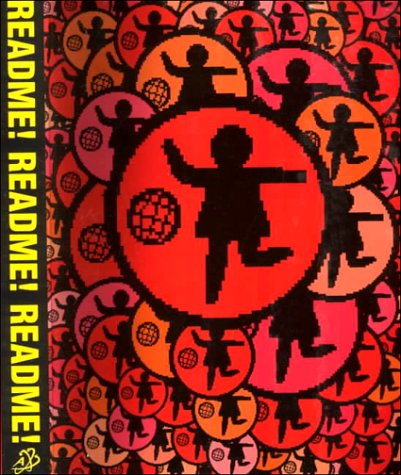Oliver Grau (ed.): MediaArtHistories (2007)
Filed under book | Tags: · art, art history, digital art, kinetic art, media art, technology, virtual reality

“Digital art has become a major contemporary art form, but it has yet to achieve acceptance from mainstream cultural institutions; it is rarely collected, and seldom included in the study of art history or other academic disciplines. In MediaArtHistories, leading scholars seek to change this. They take a wider view of media art, placing it against the backdrop of art history. Their essays demonstrate that today’s media art cannot be understood by technological details alone; it cannot be understood without its history, and it must be understood in proximity to other disciplines—film, cultural and media studies, computer science, philosophy, and sciences dealing with images.
Contributors trace the evolution of digital art, from thirteenth-century Islamic mechanical devices and eighteenth-century phantasmagoria, magic lanterns, and other multimedia illusions, to Marcel Duchamp’s inventions and 1960s kinetic and op art. They reexamine and redefine key media art theory terms—machine, media, exhibition—and consider the blurred dividing lines between art products and consumer products and between art images and science images. Finally, MediaArtHistories offers an approach for an interdisciplinary, expanded image science, which needs the ‘trained eye’ of art history.”
With texts by Rudolf Arnheim, Andreas Broeckmann, Ron Burnett, Edmond Couchot, Sean Cubitt, Dieter Daniels, Felice Frankel, Oliver Grau, Erkki Huhtamo, Douglas Kahn, Ryszard W. Kluszczynski, Machiko Kusahara, Timothy Lenoir, Lev Manovich, W.J.T. Mitchell, Gunalan Nadarajan, Christiane Paul, Louise Poissant, Edward A. Shanken, Barbara Maria Stafford, and Peter Weibel.
Publisher MIT Press, 2007
Leonardo series
ISBN 0262072793, 9780262072793
475 pages
PDF (updated on 2019-10-13)
Comment (1)ReadMe! ASCII Culture & The Revenge of Knowledge. Filtered by Nettime (1999)
Filed under book | Tags: · cyberspace, internet, labour, market economy, media art, media culture, media theory, net art, net culture, network culture, software, sound recording, technology

“A compilation of writings and debates from the Nettime newsgroup and internet mailing list. This book documents the debates over emerging media technologies that are currently reshaping society. What are the liberatory potentials? Where are the points of political conflict and class struggle in this new culture? What are the pitfalls of new technology? Read Me! provides the beginnings of this discussion and an outline for what has become a continuing forum on the Net.”
Edited by Josephine Bosma, Pauline van Mourik Broekman, Ted Byfield, Matthew Fuller, Geert Lovink, Diana McCarty, Pit Schultz Felix Stalder, McKenzie Wark, and Faith Wilding
Publisher: Autonomedia, February 1999
ISBN: 1570270899, 978-1570270895
556 pages
single PDF (added on 2014-8-29, updated on 2022-12-3)
PDF chapters (updated on 2016-5-15)
Agnieszka Pokrywka: Sztuka nowych mediów Europy Środkowo-Wschodniej w latach 2000-2009 (2009) [Polish]
Filed under thesis | Tags: · 2000s, east-central europe, media art, network society, new media art
“The thesis is a presentation and analysis of contemporary new media art in Central and Eastern Europe in the context of history (soviet times) and current situation (network society). First chapter of this work is focused on the issues mentioned above, simultaneously being kind of theoretical introduction to the concepts of Central and Eastern Europe, network society or new media art which are closely related to the technological revolution. Second chapter is kind of fusion between mentioned above subjects which apparently seem to be very different and discordant but in fact they’re deeply connected and dependent. Analysis of them allow us to understand correctly and truly realities of new media art origins in Central Eastern Europe. Comprehending of these terms became to be a necessary base for analysis technologically based art in the context of European (Chapter Three) and global (Chapter Four) networks of media creativity. Speaking generally, what has been discussed theoretically in the first part of this work is supplemented by specific examples in the second half which is showing different networks focused on organization, theory, practice of technological art. Complex and variable networks of new media art centers were visualized as a CEEMAC2000+ map (Appendix 3). The main aim of this thesis is to underline historical, political and economical influence on new media art development in Central Eastern Europe.”
Master of Arts thesis
Dept of Art Criticism and Promotion, Poznan Academy of Fine Arts, 2009
Supervisor: Professor Grzegorz Dziamski
Creative Commons BY-NC-ND 3.0 Poland License
111 pages

